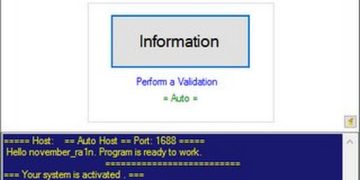Here is all you need to know about Data Storage Management
As with all things about data storage, there is no one-size-fits-all solution, so learn about your amount and type of data and the reasons for storing it before you decide how or where to store it.
What is the best way to create a solid data storage management strategy? We surveyed dozens of storage and data management experts and found these top suggestions on how to choose the right data storage solution(s) for your organization as well as how to ensure your data is properly protected and retrievable.
- Finding a solution to fit your data is more important than the reverse
Those who are unsure whether they need DAS, a SAN, or a NAS are often left with only one option. However, these options aren’t sufficient.
Fiber Channel SANs may be good for low-latency read and write operations on a fairly structured database, but they aren’t designed for doing well on spikey unstructured video workloads. Instead of selecting a one-size-fits-all strategy, smarter buyers consider the workload characteristics and select the right storage solution.
Similarly, you should find a solution that allows you to choose whether your data is stored on-premises or in the cloud. By leveraging existing assets such as network shares and SharePoint, the solution should allow you to leverage your existing investments.
Moreover, if you have a mobile workforce like many businesses these days, the data management and storage software you choose should support both mobile devices and virtual platforms – and provide an intuitive experience across all platforms, such as mobile editing capabilities and desktop or laptop interfaces.
Optimizing data storage can be accomplished by using Managed Server Network Design & Consulting Services.
- Consider all options before committing to a purchase
During the first few years of using a storage solution, the true cost is incurred. Be sure to understand the total cost of ownership for the following reasons: personnel, third-party support, monitoring, and even the chance of losing data, which is certainly a cost. This costs much more than those for purchasing and deploying an application.
In many cases, storage (systems or services) are purchased based on large initial discounts or not considering how much their chosen storage will cost years from now.
When considering the storage acquired, it can be beneficial to take a look at future scalability, technology refresh, operating costs, such as power, administration, and floor space. It is important to take into account the long-term implications of these storage characteristics and to purchase storage that provides the best total cost of ownership over time to reduce the possibility of long-term costs exceeding short-term discounts.
- Organize storage in tiers
By only storing data that you use actively on your fastest storage, such as SSD, and archiving or backing it up to a less expensive platform, such as the cloud, you can save money. So you don’t have to restructure your architecture as the performance needs of an application change, make sure your storage systems can utilize different storage tiers.
- Cloud knowledge
Cloud-based storage is not all created equal. Some clouds are optimized for archiving; others are capable of acting as a primary data storage back end; and still, others are not worth the risk for any purpose. If data is lost or inaccessible, even the lowest-priced cloud may become much more expensive.
- Make sure you carefully vet the storage providers
In the market, there are many viable solutions for storage that will fit your needs. Make sure that the storage provider you choose offers excellent customer service and can guide you through every step of the process. It is common for storage network problems to negatively affect your organization. The speed with which you resolve these problems will be key to your success.
A data protection solution should also cover everything you want – to make a list of everything you need, and ask vendors what they can do to cover everything on the list.
The capacity, performance, availability, and fault tolerance of storage providers should be carefully considered by organizations. Additionally, it is important to choose providers who offer features such as thin provisioning, tiering, and deduplication.
Last but not least, you should never assume that simply storing data at a third-party facility will eliminate all risks associated with it. Data remains the company’s responsibility.
Performing due diligence during the procurement process, as well as throughout the vendor relationship, is part of this role. It also means that, in the worst-case scenario, you need to ensure that you have an appropriate contract to cover the costs of the breach, etc.
- Refrain from storing redundant data
Companies do not have plans on storing data, so they tend to capture and store redundant information.
It used to be less of an issue when disks were expensive. Companies were better at deciding what to store. But now that storage capacity is more reasonably priced, firms tend to store everything. Identifying which material is current and which is outdated, as well as handling database performance, are the two main issues. To store data properly, you should analyze it and select a reliable source, deleting any duplicates.
- Ensure the security of your data
Whenever managing data in any IT environment, security must be the priority.
Data must be both virtually and physically secure to be secure. If the data is lost or hacked (which does happen), the data must also be encrypted so that it cannot be accessed by third parties.
To ensure that data and enterprise systems can be restored in the event of an emergency or natural disaster, it is advisable to back up encrypted data and store it on tape.
- Take snapshots, clone data, and use deduplication
You can save quite a bit of space this way while maintaining version control of your data. Several recent file systems, such as ZFS, do all this and are open source. However, commercial products have done this for many years like NetApp.
IT can now convert SAN snapshots into backups that can be stored off-site, so it can take backups several times an hour instead of once a day.
Benefits of using the Field Engineer Digital platform for companies
Field Engineer is a platform that helps companies connect with freelancers and engineers that are looking for on-demand work. There is an obvious benefit for companies because it simplifies the process of finding trustworthy workers.















